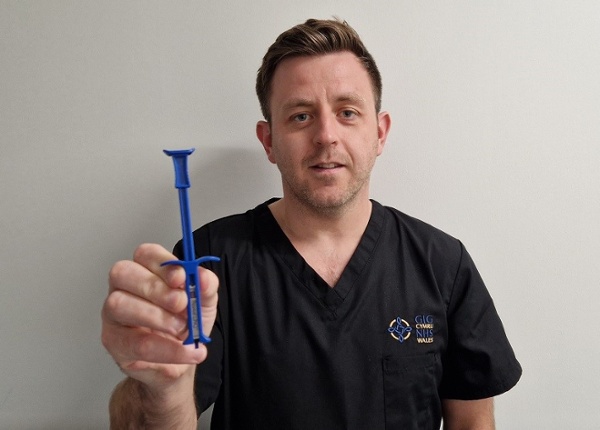Smaller is better when it comes to affairs of heart monitoring

A tiny device is having a massive effect on reducing waiting lists in Swansea Bay’s cardiology service.
Recent advances in technology have enabled devices - designed to monitor a patient’s heart rhythm - to become so small they can now be injected under the skin by a specialist cardiac physiologist.
The tiny and thin monitor, which is less than two inches long, is implanted using a syringe.
The benefits are plentiful to patients and the NHS alike.
The procedure is performed in an outpatient setting, so operating theatres and physicians are freed up to carry out more complex procedures. This not only reduces costs, but frees up beds, as patients no longer need to be admitted.
The time from referral to procedure has significantly reduced as a result of this service, which allows quicker diagnosis to treatment times – now down to between two to three weeks instead of almost 60 weeks. The service treats around 130 patients a year.
The follow-up of these implantable cardiac monitors is done from the comfort of the patient’s home. Once the implantable monitor is in place, the patient is given another monitor which is plugged in at home. This communicates with the implanted device when the patient is near it, and readings are then transmitted to the team of cardiac physiologists at Morriston Hospital.
Consultant cardiologist Dewi Thomas is responsible for the exciting development having trained the Morriston Hospital based physiology led clinics team.
Dr Thomas said: “This technology provides the best form of continuous heart rhythm monitoring that we have, and automatically alerts us to any episodes of heart rhythm disturbance. In recent years, has been improved and miniaturised to the extent where this devise can now be injected under the skin rather than requiring a small operation in one of our theatres”.
“By virtue of this, we’ve been able to move the implant procedure into an outpatient setting where it’s now performed by Aled, our senior physiologist.
“This has a number of potential advantages. It has massively speeded up the time that patients have to wait for one of these – previously, patients were booked 6 monthly appointments for monitor checks while now, they are all home monitored so any arrhythmias are seen within 24 hours.”
Dr Thomas said the device – known as an ILR or implantable loop recorder – detects arrhythmias, or disturbance of heart rhythm, which can result in collapse, stroke, and dangerous heart rhythm disturbances that can place people at risk of sudden cardiac death.
He added: “The innovative practice is not so much putting this device in – it’s the way that we have built a physiologist led service around that.”

Pictured above: Aled Phillips, Head of Physiology-Led Clinics, shows off the new device
Aled Phillips, senior cardiac physiologist, said Dr Thomas had been instrumental in enabling Swansea Bay University Health Board become one of the first in Wales to adopt this approach.
Laura Miers, Clinic Co-ordinator for Physiology-Led Clinics, and Gavin Wells, Highly Specialist Cardiac Physiologist)
He said: “Dr Thomas’s guidance, training and ongoing support has enabled us to successfully implement this service in Swansea Bay UHB.
“It’s an advanced procedure for our profession, it’s not something that’s routinely done by cardiac physiologists – it’s usually done by physicians.
“It’s an injectable monitor. It is delivered using a “syringe-like” system, the implantable monitor sits under the skin layer over the heart.
“The device itself is around 45mm long and 5mm wide and 3mm thick - which is a third of the size its predecessor.
“It’s something extra that we can do to help with waiting times, costs and patient safety/outcomes”.
“This service has reduced footfall in the hospital as the follow-up for this device is done from the patient’s home via a home monitoring device, which means that patients no longer need to attend the hospital for routine appointments”.
Aled also echoed Dr Thomas’s view that the development in technology benefitted all.
He said: “It allows physicians to carryout complex procedures in the catheter lab and displaces this minor procedure to an outpatient setting which increases compliance and is less daunting for the patient.”
Rydym yn croesawu gohebiaeth a galwadau ffôn yn y Gymraeg neu'r Saesneg. Atebir gohebiaeth Gymraeg yn y Gymraeg, ac ni fydd hyn yn arwain at oedi. Mae’r dudalen hon ar gael yn Gymraeg drwy bwyso’r botwm ar y dde ar frig y dudalen.
We welcome correspondence and telephone calls in Welsh or English. Welsh language correspondence will be replied to in Welsh, and this will not lead to a delay. This page is available in Welsh by clicking ‘Cymraeg’ at the top right of this page.